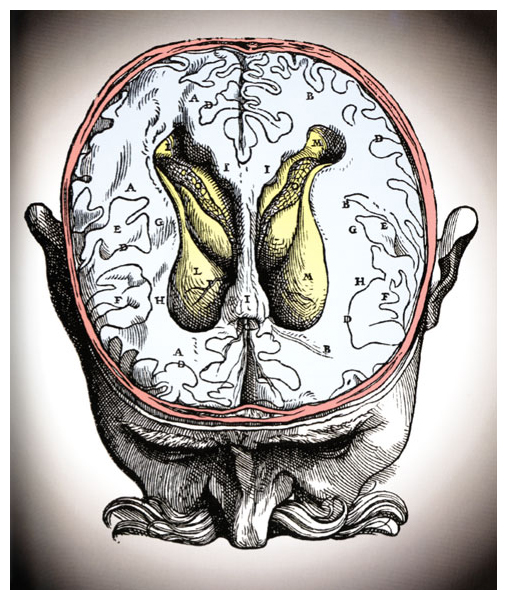Series of Milestones
By Fenella Saunders
A brief review of The Math Book, The Physics Book and The Medical Book, by Clifford Pickover
A brief review of The Math Book, The Physics Book and The Medical Book, by Clifford Pickover

DOI: 10.1511/2013.100.58
The timeline can provide useful visual clues to understanding the progression of historical events, and Clifford Pickover has employed this mechanism to its fullest. In The Math Book (2009), The Physics Book (2011) and The Medical Book (2012; Sterling Publishing, $29.95 each), Pickover relates milestones in the history of the books’ subjects.

From The Medical Book
On each two-page spread he ties an important event, person or discovery to a particular (or, in some cases, approximate) year. The left-hand page holds the date in large type along with the text; the right shows a related image. (The image above, from The Medical Book, is reprinted from Andreas Vesalius’s 1543 book De Humani Corporis Fabrica; it accompanies an entry on early descriptions of cerebrospinal fluid: in 1736 by Emanual Swedenborg and in 1764 by Domenico Felice Antonio Cotugno.) This design may not lend itself to depth, but it is both attractive and captivating. The books’ starting dates vary: The Physics Book begins with the Big Bang at 13.7 billion B.P., The Math Book with the “ant odometer” at circa 150 million B.P.
Succinct descriptions make it easy to flip through and pick up a few facts perfectly suited for cocktail-party conversation. Colorful, eye-catching illustrations depict everything from a pseduosphere in The Math Book (which is a shape that has a constant concavity over its entire surface) to the common cold in The Medical Book . A subject index at the end of each book aims to make it easier to find references when you don’t know which date to look for, but it can be a bit spotty. For instance, in The Physics Book, the flyleaf promises the book will answer the question,“Could we really be living in The Matrix?” But the only subject entry related to matrices has nothing to do with the movie. It take some digging to figure out that the referenced section is “1967: Living in a Simulation,” which never mentions the later movie by name. Nonetheless, in today’s fast-paced world, the bite-sized entries in these three books make for quick and enlightening reading.
Click "American Scientist" to access home page
American Scientist Comments and Discussion
To discuss our articles or comment on them, please share them and tag American Scientist on social media platforms. Here are links to our profiles on Twitter, Facebook, and LinkedIn.
If we re-share your post, we will moderate comments/discussion following our comments policy.